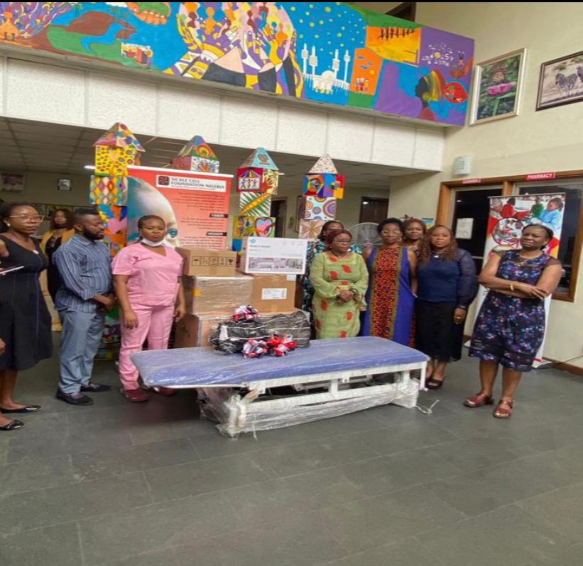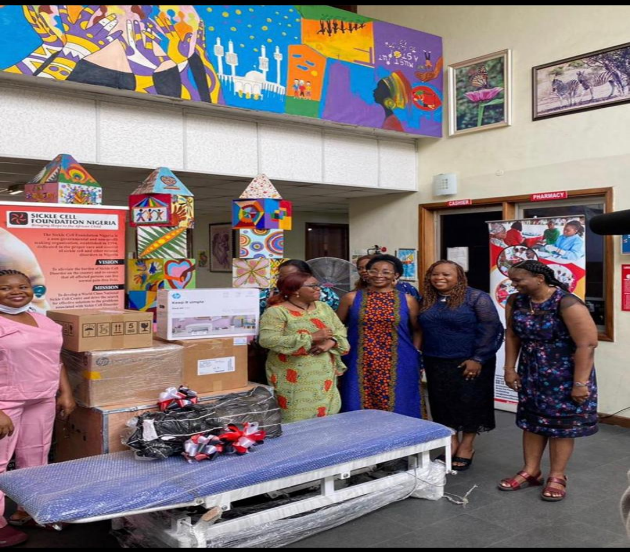Challenges Faced By Children With Sickle Cell Disease in Rural Areas, And How We Improve Their Access To Care

Sickle cell disease is a group of inherited red blood cell disorders that affect haemoglobin, the protein that carries oxygen through the body. Normally, red blood cells are disc-shaped and flexible enough to move easily through the blood vessels. In sickle cell disease, red blood cells become crescent- or “sickle”-shaped due to a genetic mutation. These sickled red blood cells do not bend or move easily and can block blood flow to the rest of the body.

WHAT DOES SICKLE CELL DISEASE ENTAIL?
Sickle cell disease is a lifelong illness. A bone marrow transplant is currently the only cure for sickle cell disease. Gene therapy is also being explored as another potential cure, but there are other effective treatments that can reduce symptoms and prolong life. If you have sickle cell disease, your healthcare team will work with you on a treatment plan to reduce your symptoms and manage the condition. The blocked blood flow through the body can lead to serious problems, including stroke, eye problems, infections, and episodes of pain called pain crises.
There have been a reduction in the morbidity and mortality rate of patients with sickle cell in most advanced countries in the Europe and third world countries in the world, this is due to the advancement in healthcare and bone marrow transplant .of course we can observe the same results in Africa if the rates of these medical advancements are advocated for in the rural areas in Africa
HOW CAN WE HELP?
- Genetic Counselling and Education: we can raise awareness about the importance of knowing one’s genotype and provide educational resources on the inheritance patterns of sickle cell disease. For example many couples in time past got married out of ignorance to their genetic status and brought forth offsprings who are now today affected by these conditions
- New-born Screening: Implement new born screening programs to identify infants with sickle cell disease early. Early diagnosis allows for timely interventions and appropriate medical care.
- Healthcare Infrastructure: Strengthen healthcare facilities and ensure access to quality healthcare, especially in rural areas.
- Prenatal Diagnosis: Offer prenatal diagnosis for couples at risk of having a child with sickle cell disease. This enables them to make informed decisions about family planning and, if necessary, consider other options.
- Promote Hematopoietic Stem Cell Transplantation: Hematopoietic stem cell transplantation is the only curative treatment for sickle cell disease. Promote research and facilities for this procedure.
- Education and Awareness: Raise awareness about sickle cell disease through public health campaigns, school programs, and community outreach. Help reduce the stigma associated with the disease.
- Blood Donation: Promote regular blood donation to ensure a consistent supply of safe blood for patients with sickle cell disease who may require transfusions.
- Research and Innovation: Support research into new treatments and therapies for sickle cell disease. Encourage collaboration between healthcare institutions, researchers, and pharmaceutical companies to develop more effective treatments.
- Community Support Groups: Establish support groups for individuals and families affected by sickle cell disease. These groups can provide emotional support and share information about managing the condition.
- Legislation and Policies: Advocate for policies and laws that protect the rights of individuals with sickle cell disease, including access to healthcare and employment without
- School-Based Education: Incorporate sickle cell education into the school curriculum, teaching children about the disease and its implications for their future family planning decisions.
- Non- Governmental organizations and partnerships: By serving as a support body for children affected with sickle cell disorders .we can help decrease the mortality rates and also create aid for these ones where the hands of the Government and medical control bodies cannot reach. To this end we at Omaytop Limited have had a lot of foundations work and contribute to the children with sickle cell disorders mostly in the rural parts of Nigeria places like bauchi, Kaduna, Lagos etc. This outreach included donation of equipment to sickle cell foundations and hospitals to foster the extinction of the ailment , serve as an empowerment program and create awareness.


PRESENTATION & COMMISSIONING OF MEDICAL EQUIPMENT DONATED TO SICKLE CELL FOUNDATION OF NIGERIA (SCFN, LAGOS) BY THE AZEEZAT OLAJUMOKE GBENRO FOUNDATION (AOGF)
SUMMARY
Reducing the burden of sickle cell disease in Nigeria requires a comprehensive approach that includes education, healthcare infrastructure development, research, and policy changes. Collaboration between government agencies, healthcare providers, non-governmental organizations, and the community is essential to trickle down progress in these areas.



